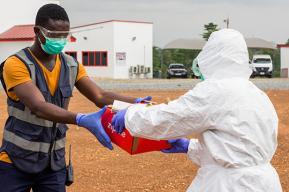
La carrera contra el reloj para un desarrollo más inteligente
En su presente séptima edición publicado en Junio 2021, examina cómo los países están utilizando la ciencia para construir un futuro inteligente, tanto en el plano ecológico como en el digital.
Este informe es una obra maestra.
Las prioridades en materia de desarrollo se han uniformizado en los últimos cinco años
Los países de toda clase de nivel de ingresos están dando prioridad a su doble transición hacia economías “verdes” y digitales. Por una parte, se han comprometido a alcanzar en 2030 los Objetivos de Desarrollo Sostenible que se han fijado ambiciosamente. Por otra parte, la mayoría de ellos están convencidos de que su futura competitividad va a depender de la prontitud con la que efectúen la transición hacia la creación de sociedades digitales. El subtítulo del Informe de la UNESCO sobre la Ciencia, “La carrera contra el reloj para un desarrollo más inteligente”, hace referencia a esa doble transición prioritaria. Más información

más uso del asesoramiento científico
Este gasto aumentó en un 19,2% en el periodo 2014-2018
entre 2014 y 2018, expresado en su equivalente de tiempo completo
entre 2014 y 2018, atribuible a China exclusivamente
Los temas relacionados con la sostenibilidad siguen representando una proporción reducida de los tratados por la investigación científica mundial
Pese al importante aumento global del gasto en investigación y a la uniformización de las prioridades en materia de desarrollo, un estudio de la UNESCO sobre 56 temas de investigación ha llegado a la conclusión de que el tema de la sostenibilidad todavía no ha llegado a generalizarse a nivel mundial en las publicaciones académicas. Uno de los temas que más rápidamente progresa en las publicaciones científicas es el de la Inteligencia Artificial (IA) y la robótica, incluso en los países en desarrollo.

Las mujeres siguen siendo minoría en las disciplinas de la revolución digital
Las mujeres siguen siendo una minoría en disciplinas como las tecnologías digitales de la información, la informática, la física, las matemáticas y la ingeniería, que son las que están impulsando la revolución digital y, por lo tanto, las que van a crear más puestos de trabajo el día de mañana. Esta situación es tanto más problemática cuanto que en muchas de esas disciplinas hay un déficit de capacidades, por ejemplo en el ámbito de la Inteligencia Artificial (IA). Para corregir la desigualdad de género en todos esos ámbitos, es necesario que los gobiernos, los sistemas educativos y las empresas realicen esfuerzos ímprobos para atraer a las niñas y mujeres al estudio y ejercicio profesional de esas disciplinas, y sobre todo para que no las abandonen. Leer más

Noticias e ideas
Descubra las tendencias más recientes de las políticas de ciencia, tecnología e innovación en su país o región

Los problemas actuales planteados por el cambio climático, la pérdida de biodiversidad, la degradación de la salud de los océanos y las pandemias afectan al mundo en su totalidad. Por eso debemos movilizar a los científicos e investigadores de todos los países sin excepción.
La carrera contra el reloj para un desarrollo más inteligente
Hemos emprendido ya la carrera contra reloj hacia un desarrollo más inteligente. ¿Estamos utilizando la ciencia para el futuro que queremos construir?
Esta es la pregunta que plantea el Informe de la UNESCO sobre la Ciencia publicado el 11 de junio de 2021.
Contact
contactar al Equipo del Informe de la UNESCO sobre la Ciencia









